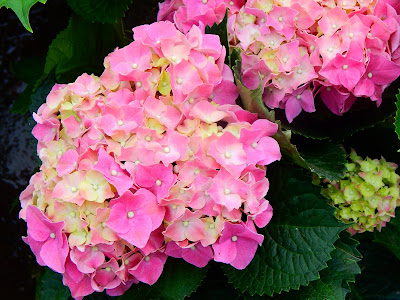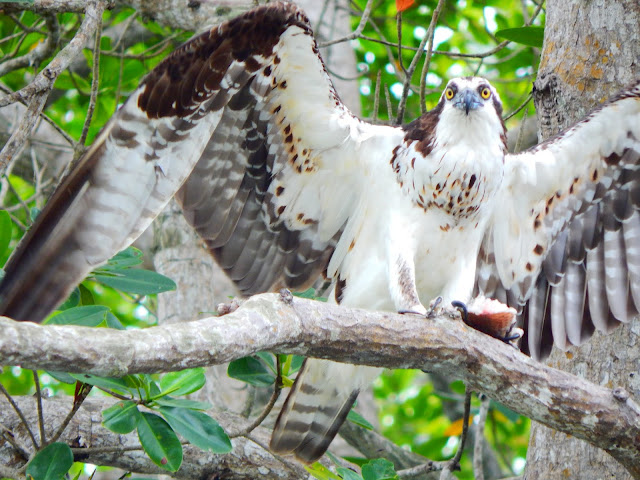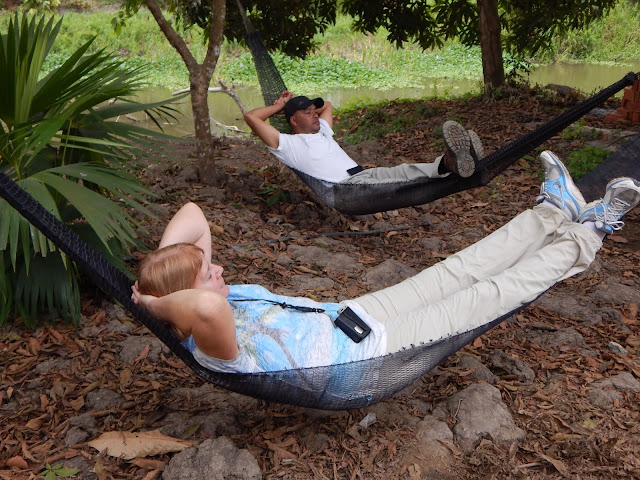http://www.guayaquilaguidedvisit.com/book-online/
The abundance that you´re about to see is not exaggerated.
Yes, there are obviously several tours here, this is a selection of the best for all the pictures of each of the individual tour.
For the full albums of the selection depicted here please visit our cloud storage where you will see over and over and over the same photos. :https://guayaquilaguidedvisit.shutterfly.com/
and please folow us on instagram: https://www.instagram.com/guayaquilaguidedvisit/
 |
| Sunset at the estuary.
Once we begin to describe this tour and you start seeing the
images, we can think that this adventure lasts several days. And in fact we
will see pictures of different groups. But this adventure in principle
impossible to achieve in a day is actually an adventure of a day.
And the bio-diversity Guayaquil an adjacent region is so
diverse that just go to this place that you can really appreciate its great
value.
This adventure takes place just 25 miles from Guayaquil.
And it's a must for anyone coming to Ecuador with the
intention of visiting the Galapagos Islands. These, as we know all over the
world are a wonderful place a real "Laboratory of evolution".
But this place is an ecological reserve full of respect for
its visitors for its great biodiversity.
For more pictures follow us on isntagram: https://www.instagram.com/guayaquilaguidedvisit/
Neotropic Cormorants
|
So let's start by describing this day:
We start early in the hotel ( 07:00 or 08:00) and head south-east towards
the Guayas River Basin.
Just a few kilometers and we will be on the highway that
crosses the field, with many plantations and farms.
Rice, banana, sugar and an infinity of
fruit trees.
On the 9th mile of travel this is our first very brief stop
to learn something about rice plantations and start enjoying the magnificent
abundance of birds.
Rice plantationhttps://www.instagram.com/guayaquilaguidedvisit/
Rice farmer
http://www.guayaquilaguidedvisit.com/book-online/
At mile 16 is the second stop in a fruit market where we buy
fresh fruit for the day, among a great selection are pineapples, mangos,
bananas and other tropical fruits.
https://www.instagram.com/guayaquilaguidedvisit/
Fresh fruits
We continue our way to mile 25 where is the mangrove
reserve of Churute. The trip does not stop surprising for the briefing, we will
not have finished to taste the first fruits and we will have arrived.
http://www.guayaquilaguidedvisit.com/book-online/
Our participants interacting with the local crabbers
Love is in the air
The Ch.M.R. tour is divided into three very different parts.
The estuary road
Which is a navigation on a motorised canoe
Here, we will learn about the ecosystem of mangroves and its
interaction with the local fauna and its importance in the production of oxygen
for the planet.
https://www.instagram.com/guayaquilaguidedvisit/
Red Crabs
White mangroves
Mangroves of Churute
In the Gulf of Guayaquil, the fresh water of the rivers
descending from the mountain range and the salt water that comes from the sea
converge; Joining together, they form the largest estuary on the Pacific coast
of South America, where Ecuador's largest expanse of mangroves is also found.
In this region, to the south, there are Mangroves Churute, the first mangrove
protected area on the mainland coast of Ecuador.
In addition to the mangroves, the reserve also protects the
dry and foggy ecosystems found in the hills of the Churute mountain range. The
reserve is a refuge for many species of wild animals, some of them endangered
species, such as Horned Screamer , an aquatic bird that lives in the lagoon of the same
name, and the crocodile of the coast, which has already disappeared in other
areas of the coast Because of the diversity and large extent of aquatic
environments that protects the reserve, in the year 1990, it was like a
declared Ramsar site, an international recognition for wetlands of great
importance
.
Geography
Mangroves of Churute is located on the western margin of the
estuary formed by the Guayas River when it flows into the Gulf of Guayaquil.
The northern boundary of the reserve is located about 15 kilometers south of
Guayaquil and Duran. It has an area of 49,389 hectares, making it one of the
largest coastal marine reserves in continental Ecuador.
The reserve contains a mixture of diverse ecosystems: mangroves,
which are thousands of trees growing in brackish waters; the plains flooding
the tide; a large number of estuaries and branches of the sea
The Churute mountain range
that reach up to 680 meters above sea level.
Biodiversity
The main ecosystem protecting the reserve is the mangroves,
which cover 60% of the territory. In the area, there are five of the seven
mangrove species reported in the country: red mangrove, white mangrove, black
mangrove, Jeli mangrove and two more rare .
As in the rest of the
areas, the red mangrove, characterized by its large aerial roots, is the most
abundant.
In the regions of the continent and to the upper part of the
contiguous hills are the dry forests typical of this part of the coast, where
the trees: like Guayacán, Tagua, Moral and Palosanto, Bototillo.
https://www.instagram.com/guayaquilaguidedvisit/
Being a reserve that protects a vast area of wetlands,
there is a great diversity of fish, shellfish and crustaceans. Among these are
red crabs, crabs, shells, mussels and oysters.
One of the most characteristic
groups is birds.
There are more than 300 species, including waterfowl such as
herons, cormorants and ibises, as well as migratory birds: such as curlews and
plovers that, during the cold season and winter of the northern hemisphere,
reach esta area where it is easier to get food and shelter.
Dry forest birds
are also representative of the reserve, some of which have a restricted
distribution to this ecosystem.
So, let´s see some of the acuatic birds:
Ospreys come here to spend the winterCocoi Heron
Yellow crown night heron
Flora and fauna of mangrove
There is a wide network of trails and water routes of
various lengths and durations. These trails, some of which require naturalist
guides authorized by the Ministry of the Environment, allow observing the flora
and fauna of the area, especially the types of mangrove forest and the large
number of birds, which allows the activity of avitourism.
The estuary
It includes an aquatic route that crosses three estuaries
and ends at the Isla de los Ingleses. This tour allows you to observe the
colonies of waterfowl typical of the mangrove areas; Between the months of May
and August you can also find the dolphins that frequent these waters.
Among mammals, species native to the coastal area have been
reported, such as bats, opossums, sloths, and crab-eating raccoons, also called
teddy bears. It is also one of the few places in the Gulf where there are
larger and threatened animals such as jaguars, tigrillos, howler monkeys,
porcupines, crocodiles and alligators.
American crocodile
Howler Monkeys https://www.instagram.com/guayaquilaguidedvisit/
Red Wasp
Sally light foot crab
Carpenter bee
http://www.guayaquilaguidedvisit.com/book-online/
Golden orb spider
https://www.instagram.com/guayaquilaguidedvisit/
Allouata palliata HOWLER MONKEY
Green iguana (male)
Are done yet?
Not by a long shot.....
The dry tropical forest
A walk through the tropical dry forest.
The equator has two very different stations. the rainy
season and the dry season.
During the rainy season from December to April, the rainfall
reaches 85 mm, while during the dry season, from May to November, it falls to 2
mm.
Similarly, the average temperature is 90 f during the rainy
season and 70 f during the dry season.
During the rainy season, vegetation is obviously more
exuberant and streams appear along the way.
During the dry season, vegetation decreases because a high
percentage of the trees in this forest are deciduous.
In this forest, we find some mammals particularly
attractive, it is the possibility of having an encounter with howler monkeys in
their natural habitat.
And also a large number of birds are found in this area.
https://www.instagram.com/guayaquilaguidedvisit/
https://www.instagram.com/guayaquilaguidedvisit/
https://www.instagram.com/guayaquilaguidedvisit/
https://www.instagram.com/guayaquilaguidedvisit/
The howler monkeys, araguatos or carayás (Alouatta) are a genus of primates platirrinos, 1 that lives in the tropical zone, from the south of Mexico, to the north of Argentina. The genus is the only one classified within the subfamily Alouattinae.
The name Alouatta has its origin in the French transcription of alouate, a word used in a dialect of the Caribbean linguistic family, pronounced like kalina and which means howler.
Palliata, comes from pallium which was a cloak or cloak worn by the ancient Greeks and Romans.
In this way the name refers to the longer, yellowish-white fur that it has on the sides of the body, giving it a mantle or mantle appearance.
https://www.instagram.com/guayaquilaguidedvisit/Characteristics
The howlers have a short face and flattened and separated nostrils. Its size ranges between 56 and 92 cm, excluding the tail, which has a similar length. Like the other Atelinians, they have prehensile tails.
Unlike the other monkeys of the New World, both males and females have trichromatic vision.7 This characteristic evolved independently of the other platyrrhines due to chromosomal duplication.
They usually move in a quadruped position through the tree canopy, keeping at all times the branches with both hands or with one hand and tail. Its prehensile tail is very strong and can support all body weight.
Habitat
It inhabits jungle areas, especially in the gallery jungles of North America. They are the most abundant primates in the Neotropics. The combined howling of large groups of araguatos resembles the whistling of the wind although much more powerful and sustained.
https://www.instagram.com/guayaquilaguidedvisit/
Again..
Are done yet?
Nope.
We´ve only reached part two of three.
So what next???
Then we visit a CACAO FARM!!!
There will be lunch ( traditional Ecuadorian chicken dish) and yes, we´re prepared for special dietary restrictions and allergies.
Are we going to talk about the cacao farm tour now? Nope.
That was uploaded before so please visit an older brlog entry for more about this part.
Yes, we´re going to share now some pictures of our participants having fun during this tour.
https://www.instagram.com/guayaquilaguidedvisit/
http://www.guayaquilaguidedvisit.com/book-online/
http://www.guayaquilaguidedvisit.com/book-online/
Then we visit a CACAO FARM!!!
There will be lunch ( traditional Ecuadorian chicken dish) and yes, we´re prepared for special dietary restrictions and allergies.
Are we going to talk about the cacao farm tour now? Nope.
That was uploaded before so please visit an older brlog entry for more about this part.
Yes, we´re going to share now some pictures of our participants having fun during this tour.
https://www.instagram.com/guayaquilaguidedvisit/
http://www.guayaquilaguidedvisit.com/book-online/
http://www.guayaquilaguidedvisit.com/book-online/
This day come now to an end...
So, it is time now to say goodbye, until next time but we´re saying goodbye with some sunset shots.
BYE!!!!
https://www.instagram.com/guayaquilaguidedvisit/
So, it is time now to say goodbye, until next time but we´re saying goodbye with some sunset shots.
BYE!!!!
https://www.instagram.com/guayaquilaguidedvisit/
and follow us on instagram:

































































































































































































No comments:
Post a Comment